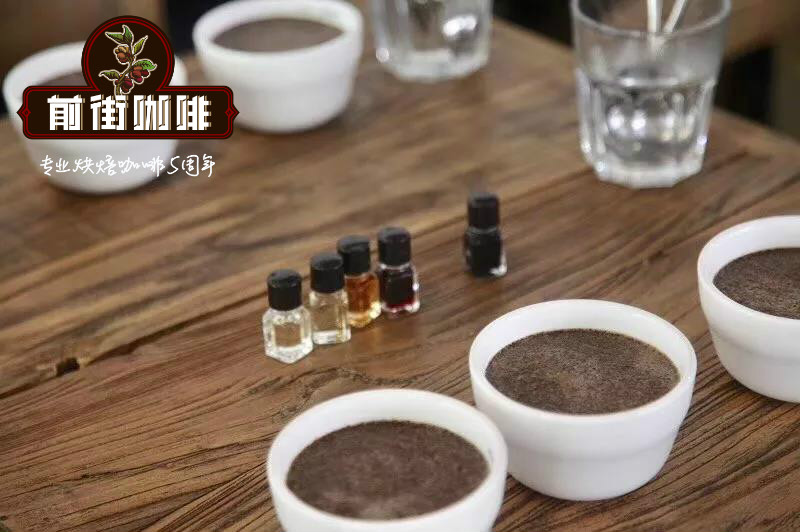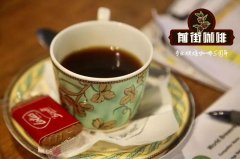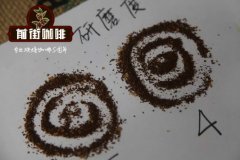Does the cup test evaluate raw beans or cooked beans? What is the significance of cup testing?

Professional coffee knowledge exchange more coffee bean information please follow the coffee workshop (Wechat official account cafe_style)
When we taste a cup of coffee, we can understand the coffee characteristics of this cup of coffee in aroma, taste and flavor from the cup test, and we can find out your favorite cup of coffee. Of course, professional cup testing has the so-called certain roasting degree of coffee and cup brewing and cup testing process, if the general quality of coffee to use this cup test method to find good coffee, then you will be disappointed. This is the professional coffee cup test of the three occasions, the general character of coffee, but also from the cup test process to understand the characteristics of coffee, cup test is simple and simple, difficult to say is also difficult, but as long as keep a normal mind to look at it, do not let drinking coffee become a painful thing, cup test for us is through this process to show the taste I feel in the way of data score So that you can understand the characteristics of coffee beans, but also through the cup test to let you know more about the taste of coffee beans, choose your favorite coffee beans.
The significance of cup test lies in the following points:
The purpose of ⑴ is to help coffee farmers grow coffee beans of a higher level.
⑵, as a cup tester, not only needs to help coffee farmers solve their planting problems, but more importantly, it is more important to guide them how to know what is wrong with their own coffee without a cup tester.
⑶ in the daily coffee shop work, cup testers need to use the cup test to detect whether there is something wrong with the coffee beans; if not, what their flavor should be, and how the baristas should better show the other possible flavor and state of the coffee beans.
Usually the cup test is conducted in the morning, Liao Weifen said, "because we know that after noon, our taste buds will overheat, affecting the judgment of tasting coffee." And four hours before the cup test starts, we don't eat spicy or heavy food to keep our taste buds clean. "
Each time the quality supervisor is usually 6 people, everyone does not speak during the tasting process, alone experience the interaction with the coffee. After that, we discussed the score and the taste and quality of the coffee.
First grind the coffee beans to a rough degree, pour the coffee powder into a small bowl, pour into boiling hot water (95 °) and soak for 3-4 minutes. This step can fully release the aroma of coffee. Be sure to calm down and smell the aroma emitted by the "broken shell" coffee before you start tasting it.
After the "broken residue", you need to gently stir the coffee to let the rest of the coffee grounds sink to the bottom, and the coffee grounds floating on the surface must be skimmed off.
Once all the coffee grounds on the surface are clean, you can start tasting. Don't be afraid that the sound of smoking coffee is not standard, because everyone's voice is different. Personally, I will try to keep my voice down when drinking coffee, but others may tell you that the louder the better. Scoop a spoonful of coffee with a deeper spoon, close to the lips, suck the coffee into the mouth and spray it fully into the mouth. The inhalation will form a stream of coffee "steam", making it easier to detect the various tastes and aromas of the coffee.
The next step is to describe the taste and aroma you perceive in words. Don't be afraid to make mistakes! Everyone will taste some taste that others do not feel, and will not be able to taste the taste described by others, and sometimes the cup test is a dozen cups, the taste buds will be tired, and the taste will become sluggish. At this time, you must have a rest to make your sense of taste clear.
Taste description
1) dry aroma: does the coffee smell fresh enough? Or has it gone bad? Is the baking too deep or too shallow? The following are several common words to describe the aroma of dried coffee: sweet, spicy, roasted, nutty, malt, carbon, rotten, fresh, etc.
2) Wet fragrance: after mixing with water, the aroma of coffee becomes stronger. Here are several common words to describe the wet smell of coffee: silky, fresh, vibrant, creamy, sharp, etc.
3) sour taste: sour taste is good and bad, it can make coffee fresh, it can also make coffee too sour. Technology, although the sour taste is good, but too strong will also affect the overall balance of coffee. The following are several common words to describe the sour taste of coffee: sharp, neutral, soft, sharp, sour, strong, mild, delicate, silky, red wine and so on.
4) palate: the taste is the fullness and mellowness of coffee in the mouth. The following are several common words to describe the taste of coffee: plump, round, thick, thin and so on.
5) Taste: this is the most interesting part. Did you taste chocolate? And fruit? The following are several common words to describe the taste of coffee: fruit, red wine, butter, caramel, chocolate, blackcurrant, wood, grass, honey, licorice, malt, nutty, spice (which spice, exactly? ), etc.
6) aftertaste: how does the coffee taste in the mouth after tasting? The aftertaste is also one of the important criteria to judge the quality of coffee. The following are several common words to describe the aftertaste of coffee: sweet, sour, bitter, sharp, smooth, full, silky, charred, dry and so on.
Make an evaluation
What's your overall impression of coffee? Are you impressed by certain aspects of coffee? Hurry up to share and discuss with the friends who take the cup test with you!
Important Notice :
前街咖啡 FrontStreet Coffee has moved to new addredd:
FrontStreet Coffee Address: 315,Donghua East Road,GuangZhou
Tel:020 38364473
- Prev

A desert ruby submerged by war-Yemen
Professional coffee knowledge exchange more coffee bean information please follow the coffee workshop (Wechat official account cafe_style) to ask which country do you know the coffee originated? There is bound to be a stir of controversy. It is said that coffee was first found in Ethiopia, but at the same time, Yemen, Ethiopia's neighbor, was also growing and drinking coffee. The history of coffee goes back centuries.
- Next

Sumatra Blue Lake Mantenin G1 (also known as Blue Eye Manning) growing environment with sweet taste
Professional coffee knowledge exchange more coffee bean information please follow the coffee workshop (Wechat official account cafe_style) Sumatra Blue Lake Mantenin G1 (also known as Blue Eye Manning) Origin: mountains near the volcanic Lake (Lake Toba) in North Sumatra Indonesia Note: Doba Lake / dopa Lake / Toba Lake, the world's largest volcanic lake, the lake is clear blue, so there is a blue-eyed lake.
Related
- Detailed explanation of Jadeite planting Land in Panamanian Jadeite Manor introduction to the grading system of Jadeite competitive bidding, Red bid, Green bid and Rose Summer
- Story of Coffee planting in Brenka region of Costa Rica Stonehenge Manor anaerobic heavy honey treatment of flavor mouth
- What's on the barrel of Blue Mountain Coffee beans?
- Can American coffee also pull flowers? How to use hot American style to pull out a good-looking pattern?
- Can you make a cold extract with coffee beans? What is the right proportion for cold-extracted coffee formula?
- Indonesian PWN Gold Mandrine Coffee Origin Features Flavor How to Chong? Mandolin coffee is American.
- A brief introduction to the flavor characteristics of Brazilian yellow bourbon coffee beans
- What is the effect of different water quality on the flavor of cold-extracted coffee? What kind of water is best for brewing coffee?
- Why do you think of Rose Summer whenever you mention Panamanian coffee?
- Introduction to the characteristics of authentic blue mountain coffee bean producing areas? What is the CIB Coffee Authority in Jamaica?

